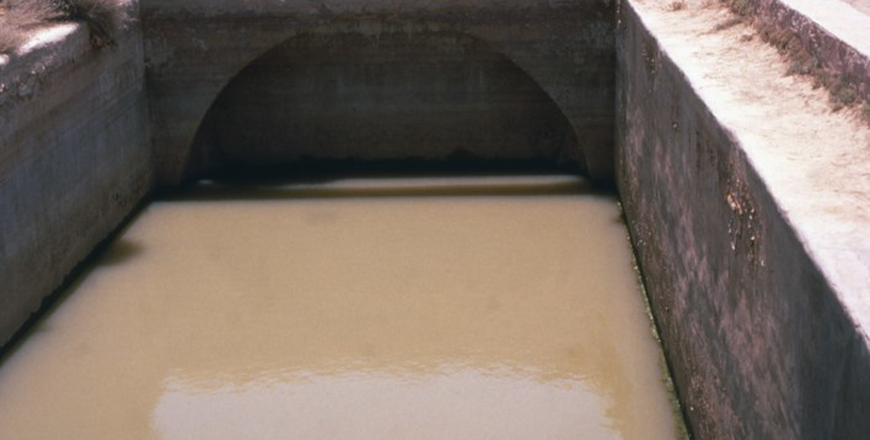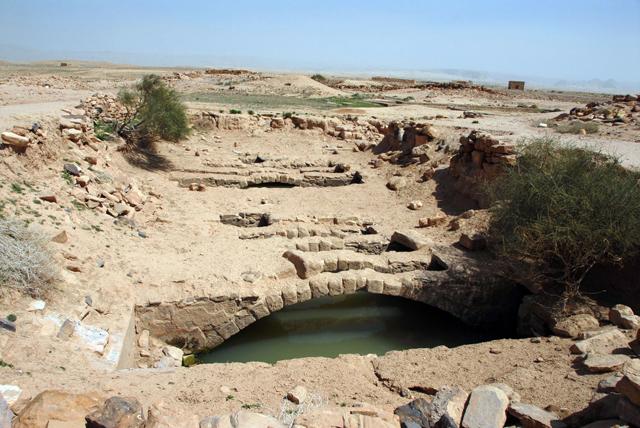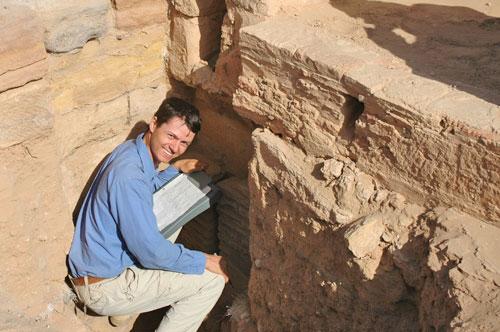You are here
Roman legacy in Jordan: Analysing historical phases of Hawara fort
By Saeb Rawashdeh - May 09,2024 - Last updated at May 09,2024

A water reservoir at the Roman military camp in Hawara, southern Jordan (Photo courtesy of ACOR)
AMMAN – Roman political power was present in the region in the 1st century BC, but the annexation of the Nabataean Kingdom by the Roman Empire in 106 AD was a turning point in the history of southern Levant and the Nabataeans. The 2nd century AD represents the military and political pinnacle of the Roman Empire in the Mediterranean and in general.
The Roman fort at Ḥawara, modern Ḥumayma, was established soon after the conquest of the Nabataean Kingdom and the establishment of the Provincia Arabia. Hawara is located in the southern Jordan, between Petra and Wadi Rum.
According to the Canadian scholar, John Oleson, the initial phase of the Roman military camp was constructed between 111 AD and 116 AD.
This complex, consisting of the military installation, water reservoirs, commander's residence and remains of churches and mosques testifies about continuous occupation of the site. It hosted an auxiliary unit, probably a quingenary ala,
detached from one or more of the legions stationed in the region after the conquest.
"A 3rd century inscription found in a shrine in the associated civilian settlement mentions the Legio III Cyrenaica, but units from the Legio VI Ferrata may also have cycled through the fort," Oleson said. The walls, one gate, and many of the internal structures were excavated by Oleson between 1993 and 2005.
According to Oleson, Hawara had seven phases.
"The phase I –Pre-Roman Nabataean ceramics, without any known structural remains [1st century AD]; Phase II buildings, and water-supply system, with subsequent piecemeal alterations [ca. 106-110 AD to ca. 285AD]. Construction of military bath in the vicus; Phase III- Possible abandonment of the fort, either as a result of destruction by Zenobia’s army in 270 AD or as part of Diocletian’s reorganisation of the frontier in the 290’s [late third to early fourth century]; Phase IV- Renovation or reoccupation of portions of the fort [ca. 320 AD to 360 AD], including units of Equites sagittarii indigenae. Ends with destruction by earthquake of 363 AD or events associated with the revolt of Queen Mavia in 375-378 AD; Phase V- Renovation of portions of the fort for military and civilian occupation, and dumping of debris in many abandoned rooms [ca. 363AD to early 5th century]; Phase VI-Abandonment of the fort [early fifth century], removal of building materials, and gradual burial of the walls by wind and water-born soil [5th to 8th century]; Phase VIA: Small-scale, temporary occupation of Area L [mid-6th century], " Oleson explained.
The Roman bath southwest of the fort was built on top of a Nabataean structure as well as a shrine. In the initial stages, the Romans built the fortification and all the interior buildings, as well as internal waters supply and canalisation.
"Assuming some coordination with the completion of the Via Nova Traiana, these projects were probably finished by at least the first six years after the conquest in 106 AD. There were subsequent minor, piecemeal alterations and renovations
to some of the interior structures of the fort during the 2nd and 3rd century, but the
main structures within the walls were complete in the early 2nd d century," Oleson elaborated, adding that several strikingly luxurious features in the praetorium suggest the participation of Nabataean workmen.
Stylistic details show that the mosaic floor in the commander’s suite of the praetorium was laid by the same school of Nabataean mosaicists.
The Roman bath at the commander's quarter had a hypocaust heating system (an ancient Roman heating system, comprising a hollow space under the floor of a building, into which hot air was directed) very similar in design to that in the remarkable Nabataean or early Roman bath in a spectacular location on the Jabal Al Khubthah above Petra.
"There was a similar heated room in the small fort at Khirbat Al Khalidi, 33 kilometres south of Ḥawara. The luxurious House EZ IV at az-Zanṭur in Petra, which belongs to approximately the same period as the praetorium, also had a winter triclinium with hypocaust heating," Oleson underlined.
According to the scholar, a Nabataean or early Roman period house at Khirbat adh-Dhariḥ has two similar hypocaust rooms, one of which may have been associated with a bath.
Petra supplied most of the pottery used by both soldiers and civilians at Ḥawara throughout its history, so other types of relations are natural, Oleson concluded.
Related Articles
AMMAN — The Awara Roman fort, located in the south of Petra, has the proportions and internal layout of a typical principate “playing card”
AMMAN — Despite no “direct literary sources”, a Canadian scholar is piecing together archaeological clues to the origins of the ancient sett
AMMAN — The preatorium, a commander’s residence, in Humayma, 280km south of Amman, clearly demonstrates the luxury and the status the comman

















